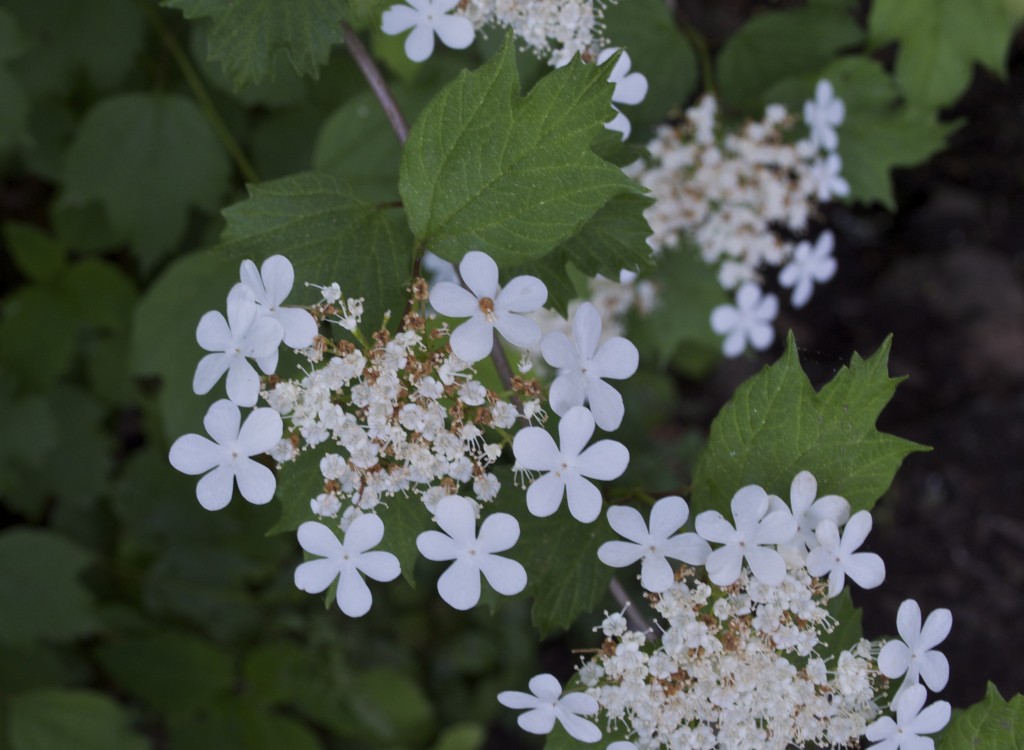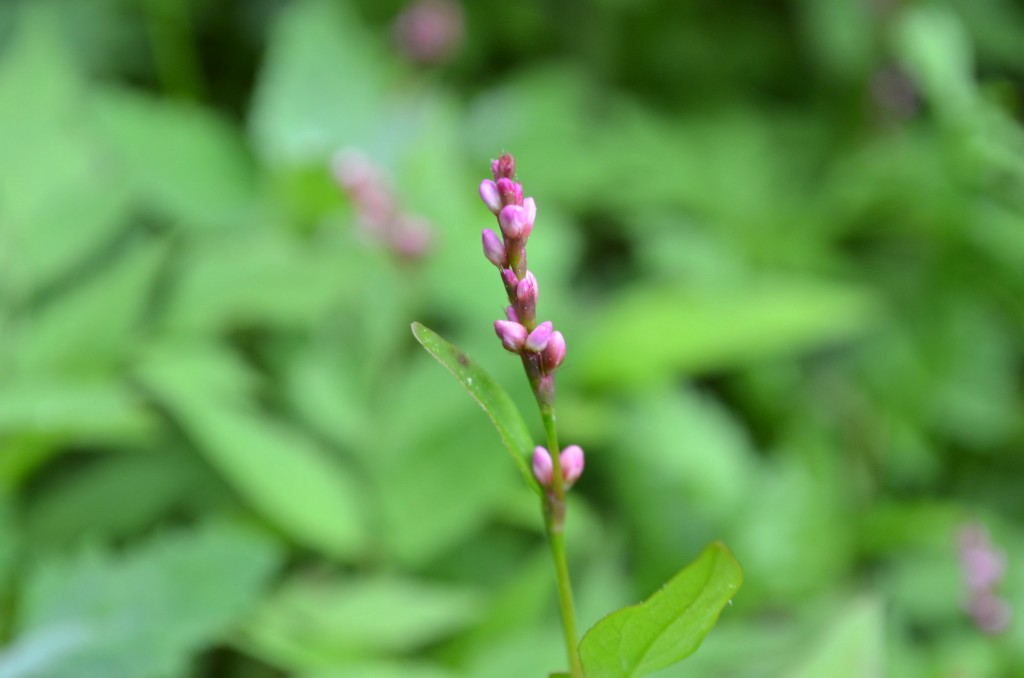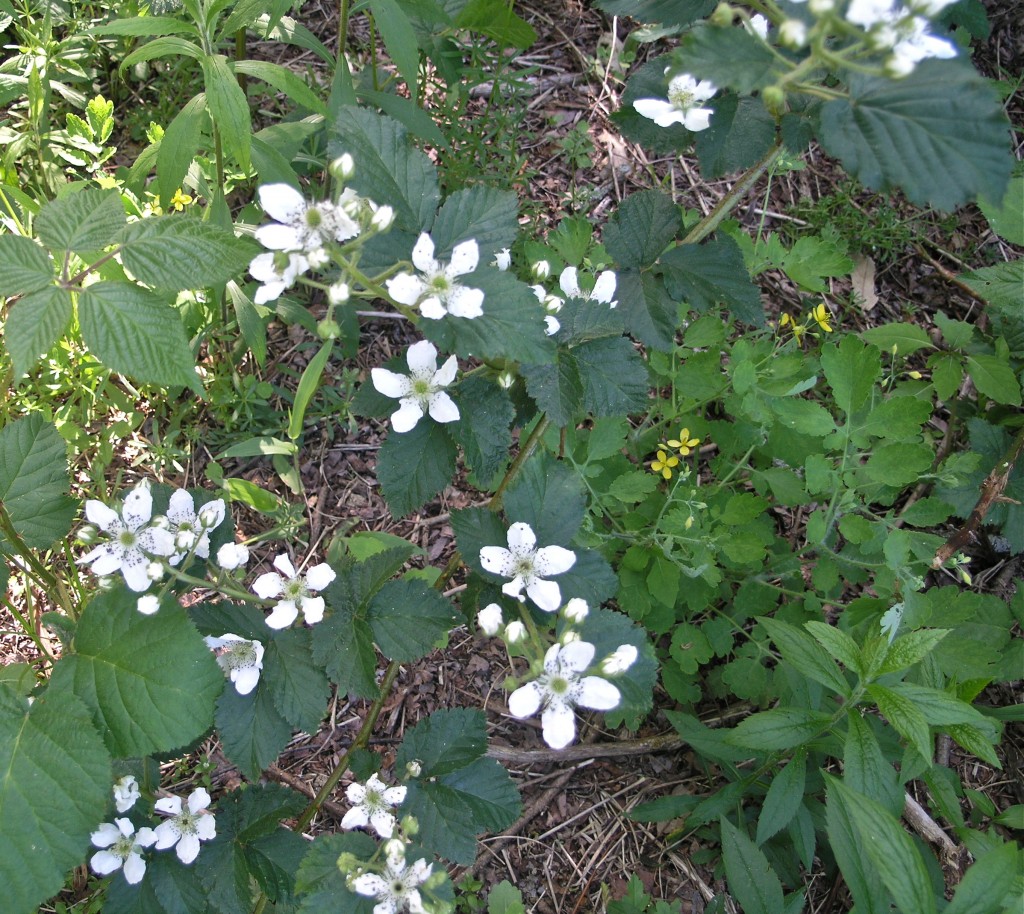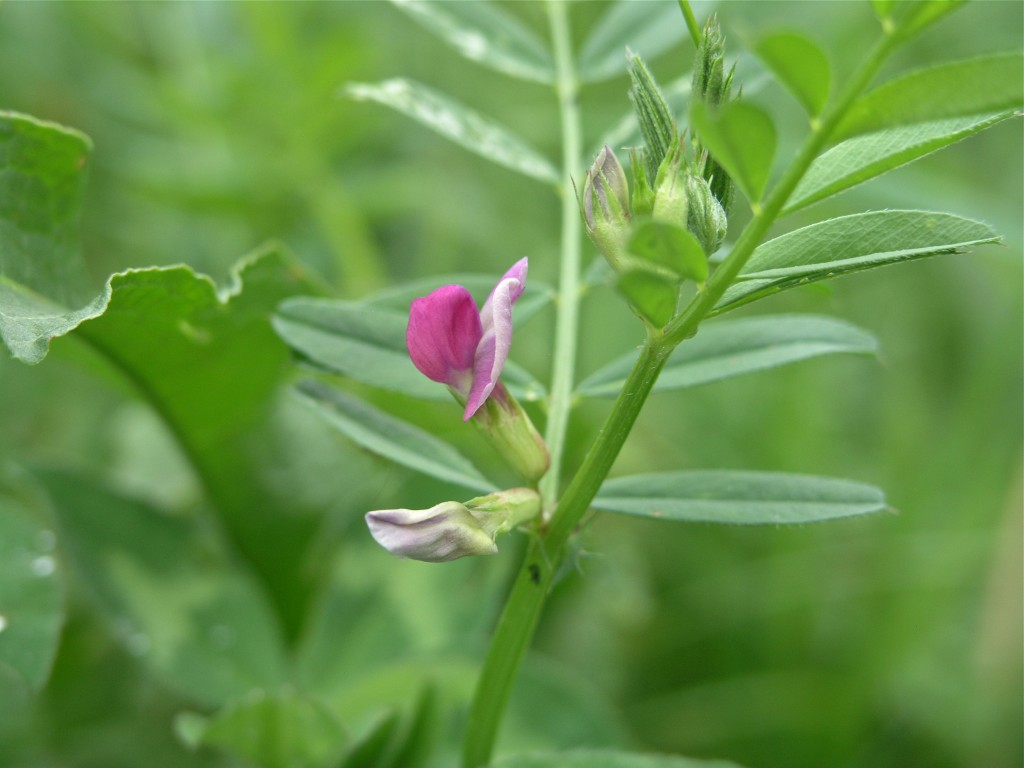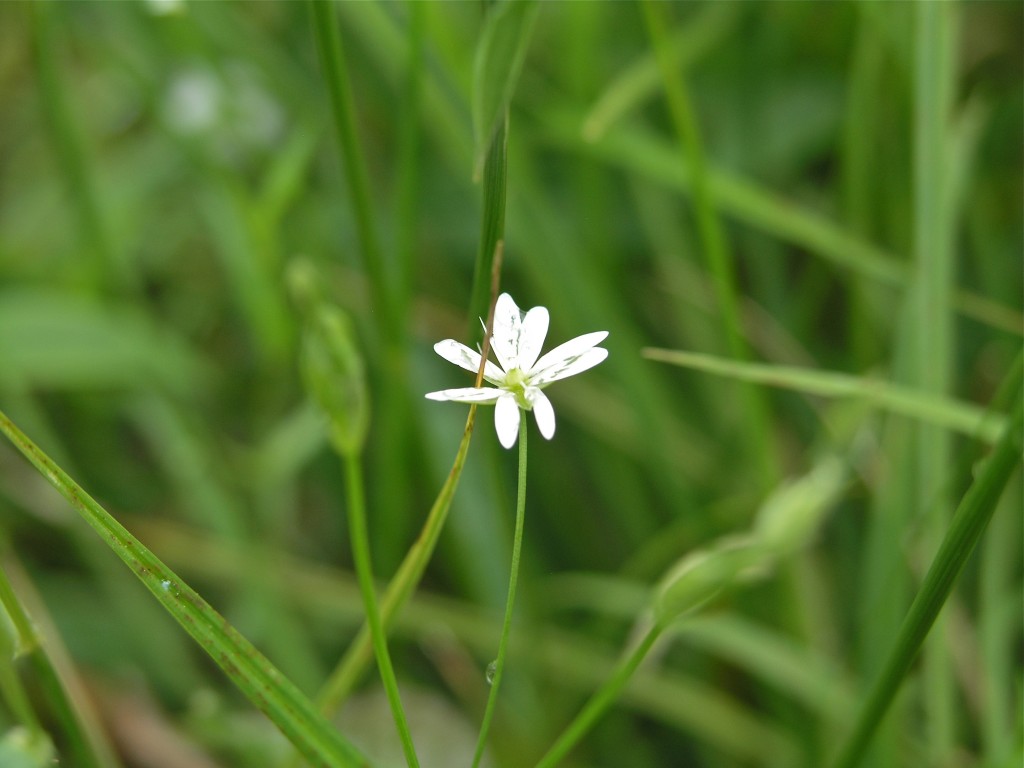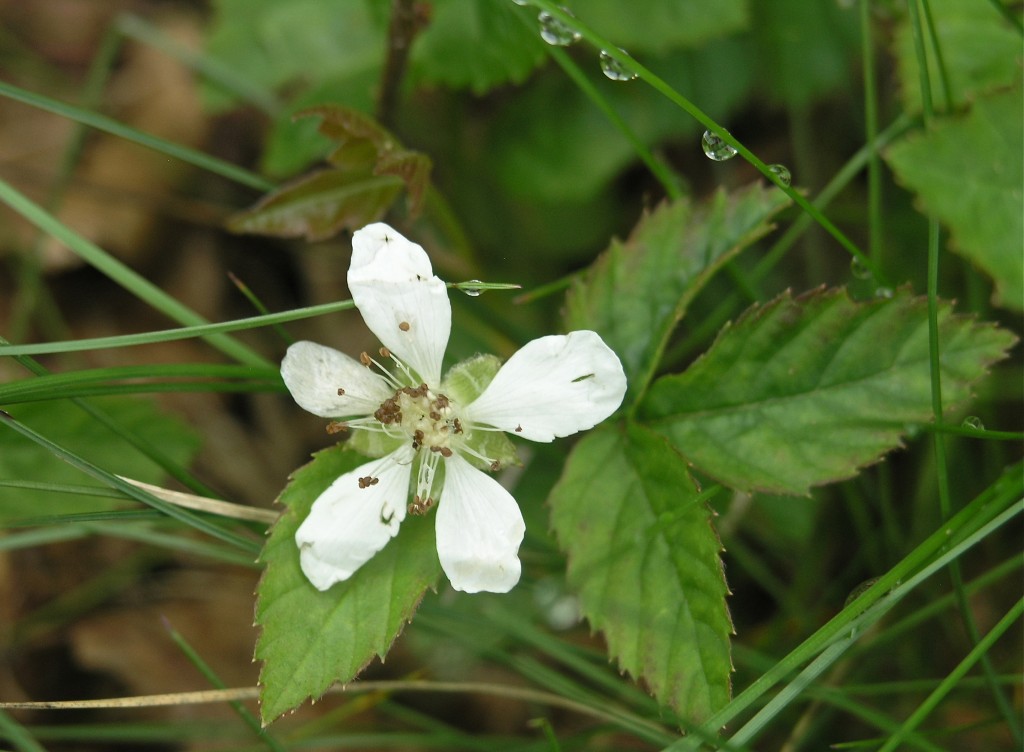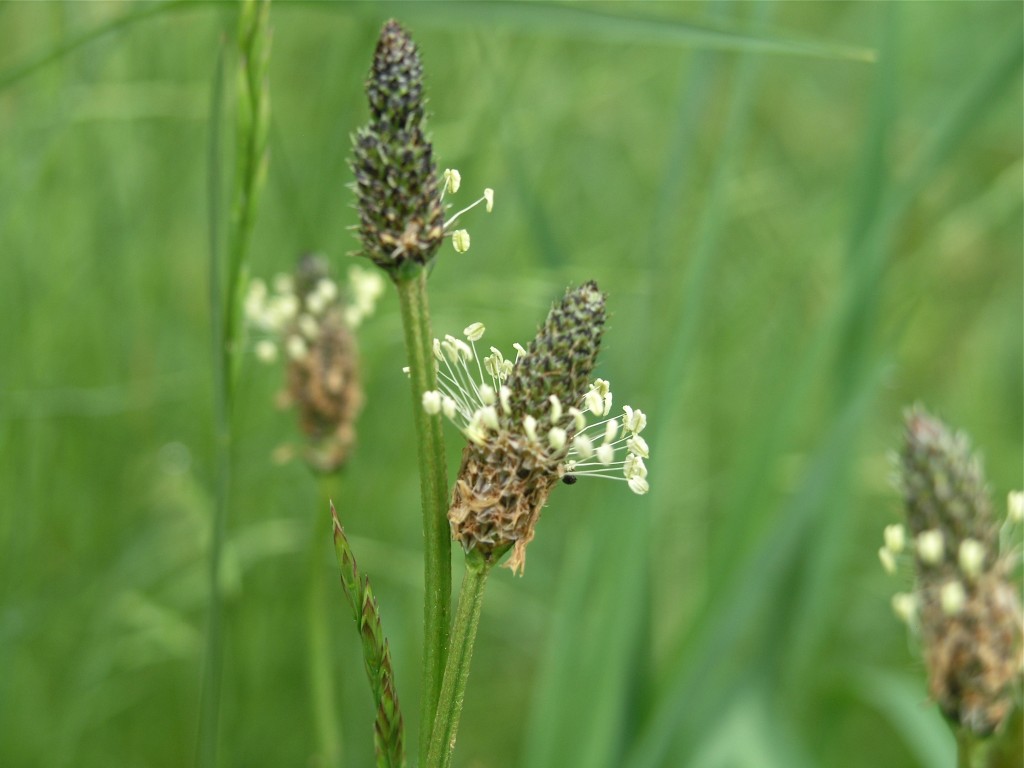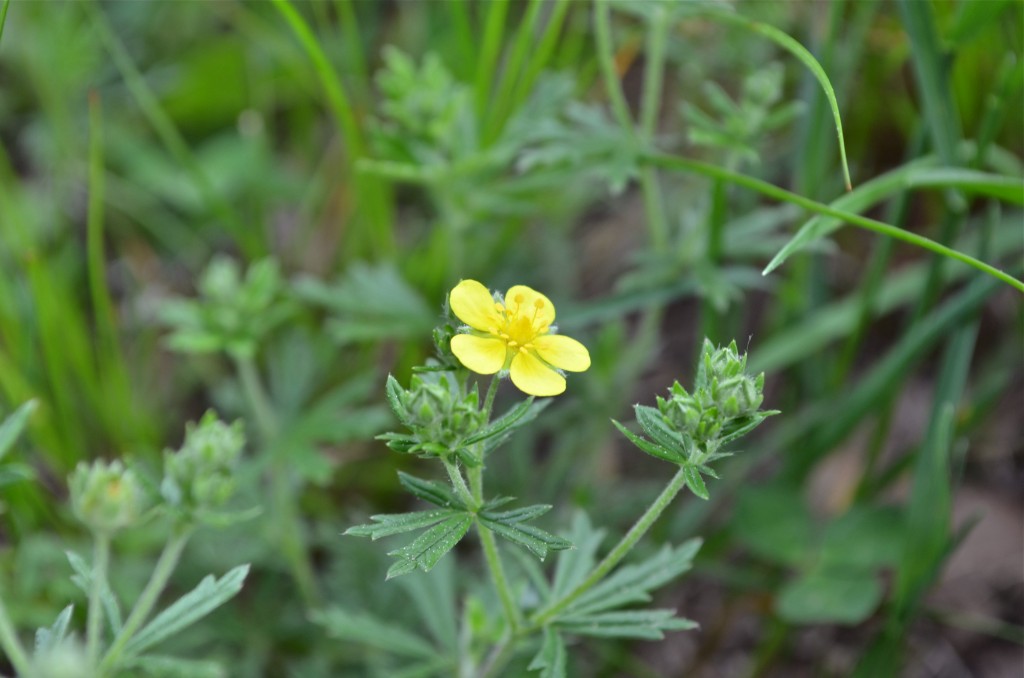 I have already noted Common Cinquefoil growing all over the place— it has leaves similar to wild strawberry. This variety has spiky leaves and is less trailing. The leaves are silvery on the underside. Flowering time June to September, so it’s a little early. Rose family. Origin: Eurasia.
I have already noted Common Cinquefoil growing all over the place— it has leaves similar to wild strawberry. This variety has spiky leaves and is less trailing. The leaves are silvery on the underside. Flowering time June to September, so it’s a little early. Rose family. Origin: Eurasia.
Silvery Cinquefoil (Potentilla argentea)

